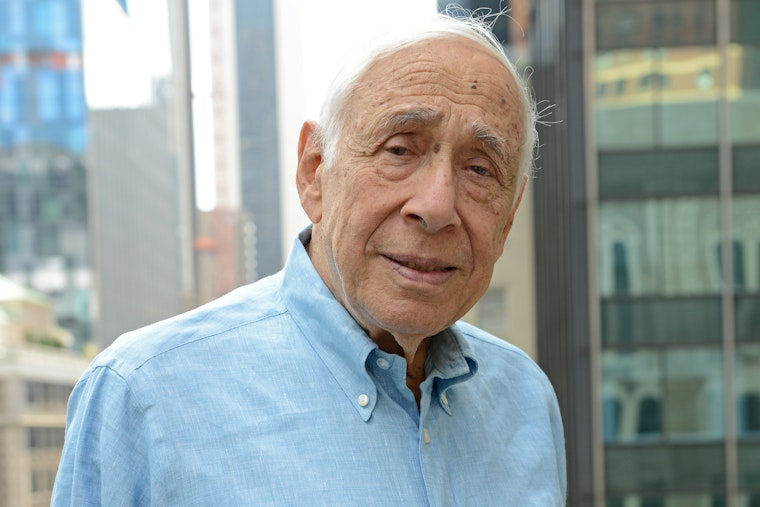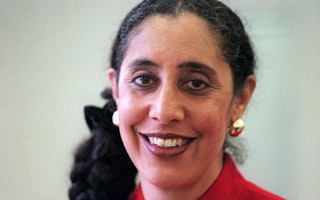Honoring a Social Justice Legend
By Aryeh Neier

Several months after joining the Open Society Foundations (known at that time as the Open Society Institute) in September 1993 as its first president, I reached out to Herb Sturz for guidance and assistance. My background directing the American Civil Liberties Union and then Human Rights Watch prepared me, I thought, for many of my responsibilities at Open Society. Yet there was at least one of my duties for which I had no background. If I was to deal with it, I would need help.
At that moment, a transition from apartheid was underway in South Africa. George Soros had begun his philanthropic work in South Africa 15 years earlier, and he was eager to assist the democratically elected government of Nelson Mandela, which came into office in 1994, to succeed in addressing the terrible legacy of apartheid. Colleagues in South Africa had persuaded Soros that he should focus on the issue of housing.
Under apartheid, decent housing for the country’s Black African majority was almost entirely lacking. Many millions of Black Africans lived in so-called townships, densely populated settlements outside areas of the country’s cities that were reserved for whites. Typically, townships consisted of paper, cardboard, and tin shacks without indoor toilets or running water. Addressing this issue would be an immense undertaking.
I thought Herb Sturz could help because at that moment he was heading a program in New York City that was using creative financing to build high-quality affordable housing. Moreover, I knew Herb to be a particularly creative person—“a kind of genius,” to appropriate the title of a book about him by New York Times reporter Sam Roberts—with a strong commitment to social justice. The opportunity to address one of the great evils of apartheid would be irresistible to him, I felt certain.
I had known Sturz since the second half of the 1960s. When I first met him, he was the founding director of the Vera Institute of Justice, which was then, and is still today, a leading force in the drive to reform the U.S. criminal justice system. Under Sturz’s direction, Vera was best known for leading the struggle to end the use of bail to determine who would be incarcerated in advance of trial. That system, then and now, is inherently discriminatory, as it makes the jailing of defendants in criminal cases depend on their financial resources rather than on the likelihood that they will show up for trial. In practice, it reverses the presumption of innocence for the poor, leading to their punishment by incarceration before trial, often for longer periods than if they are ultimately convicted of a crime.
After directing Vera, and after using his post there to create and to spin-off some other organizations dealing with the criminal justice system and those victimized by it, Sturz served in a number of posts in and out of government. For a period, he was the deputy mayor of New York City for criminal justice. He served as chair of New York City’s Planning Commission. And for a number of years, he was a member of the editorial board of the New York Times.
When I enlisted Sturz to represent Open Society in dealing with housing in post-apartheid South Africa, he helped to create an organization in that country called the National Urban Reconstruction and Housing Agency (NURCHA) in partnership with the Mandela government. He became Open Society’s representative on that organization’s board, helping to identify the staff that managed the program. George Soros and the South African government put up the funds for NURCHA’s operating expenses. In addition, Soros put up $50,000,000 in guarantees to encourage South African banks to finance the building of low-cost houses, provided that other donors matched his commitment five to one.
NURCHA proved immensely successful. Since it was launched nearly a quarter of a century ago, the program has financed the construction of about 300,000 homes in South Africa that are owned by their occupants. On average, each house has about five residents, so this is housing for about a million and a half Black Africans who previously lived in the squalid shacks of the townships. Typically, the homes are detached, single-family houses with a living room, two bedrooms, a kitchen, and a bathroom. Many have vegetable gardens, and a tree is planted for every house (one of Sturz’s proposals).
I have visited some of those houses and they are meticulously maintained. Many former residents of the shanty towns were employed and learned to work in the building trades by putting up the houses. Others became successful entrepreneurs by contracting to build large numbers of houses. Astonishingly, there was little call on the funds Soros put up in the form of guarantees. The “emerging builders” who put up the houses paid back the bank loans that they obtained—because the occupants of the houses paid them. In practice, Soros’s funding for NURCHA was largely limited to his contribution to its operating costs.
Sturz’s involvement in NURCHA led to his joining Open Society, and most of his subsequent work for Open Society has involved programs in the United States. The most ambitious has been the establishment of The After-School Corporation, which he conceived, and of which he was the founding chair.
The After-School Corporation was created to provide children attending public schools in New York City with the opportunity to enroll in after school programs which would supplement and enrich their education, keep them off the streets, and assist their working parents. The initiative was launched with a commitment of $125 million from George Soros to be matched, three to one, by other donors. Sturz took the lead in securing the $375 million from public and private donors that brought the total to $500 million. The programs were organized by community-based organizations throughout New York City. Within a few years, some 250 programs were launched, enrolling about 40,000 children at a time. The program was designed in a way that would make its continuation a public responsibility. In addition, Sturz played a leading role in enlisting other foundations to establish a nationwide network of organizations promoting after-school programs.
Over the course of his tenure with Open Society, Herb Sturz has played a leading role in developing a number of other programs. In the recent period, his major concern has been—as it was in the early stages of his career as director of the Vera Institute of Justice—pretrial detention. He has led the effort in New York City to close the city’s notorious jail at Riker’s Island and to reduce greatly the number of men, women, and children incarcerated in advance of trial. This is still very much a work in progress. Though Sturz is ending his service with Open Society, he is intent on continuing this struggle and maintaining it until it succeeds. As needed, he will continue to collaborate with Open Society, on a pro bono basis, until the task is done.
Having had the opportunity to work alongside him for many years, I will miss his day-to-day company. Though he is departing from the offices of Open Society, he leaves behind him the fond feelings of his colleagues and the enduring impact of projects such as NURCHA and The After-School Corporation, which have improved the lives of vast numbers of people in places as widely separated as South Africa and New York City.

Aryeh Neier is president emeritus of the Open Society Foundations.

